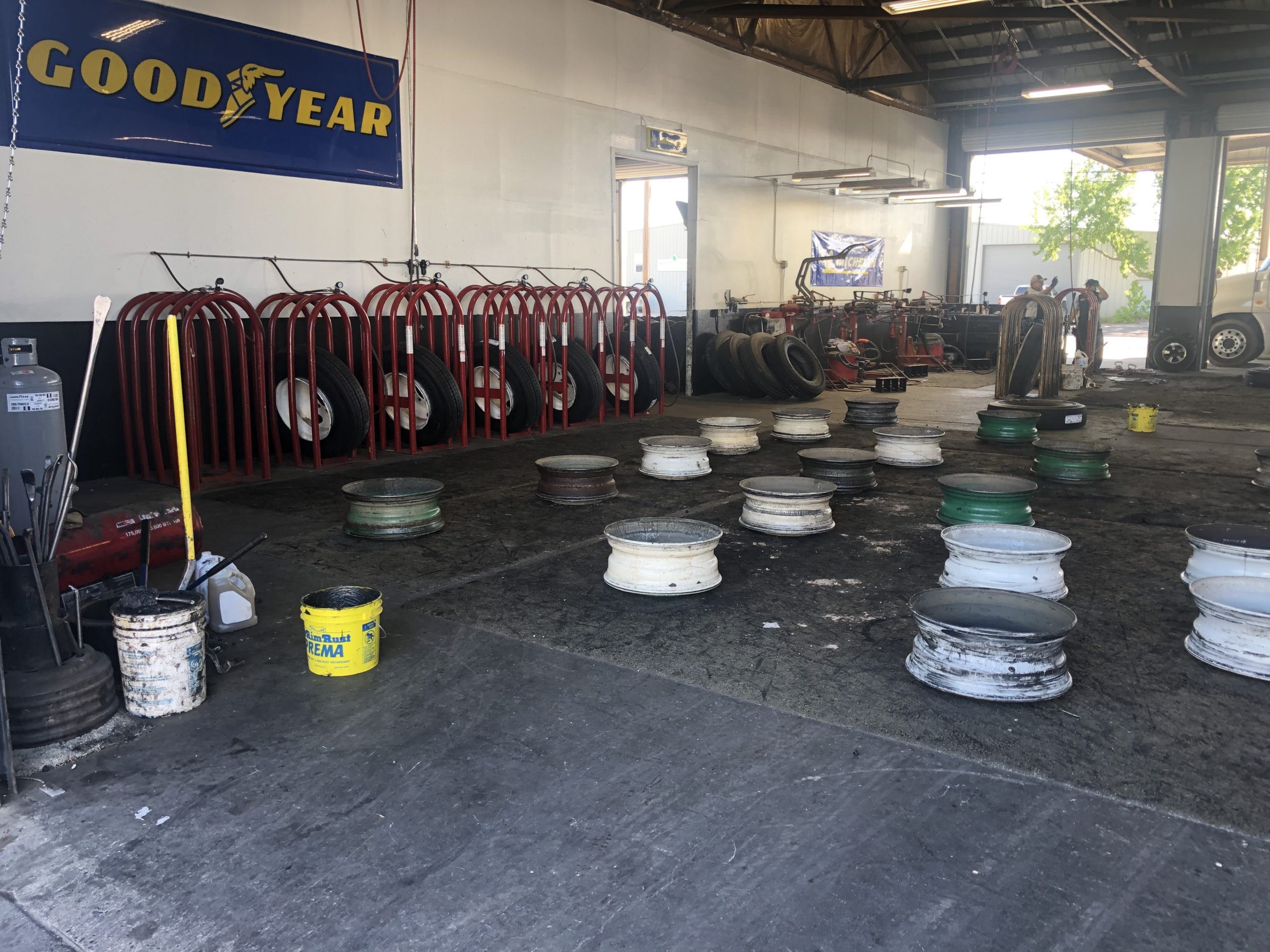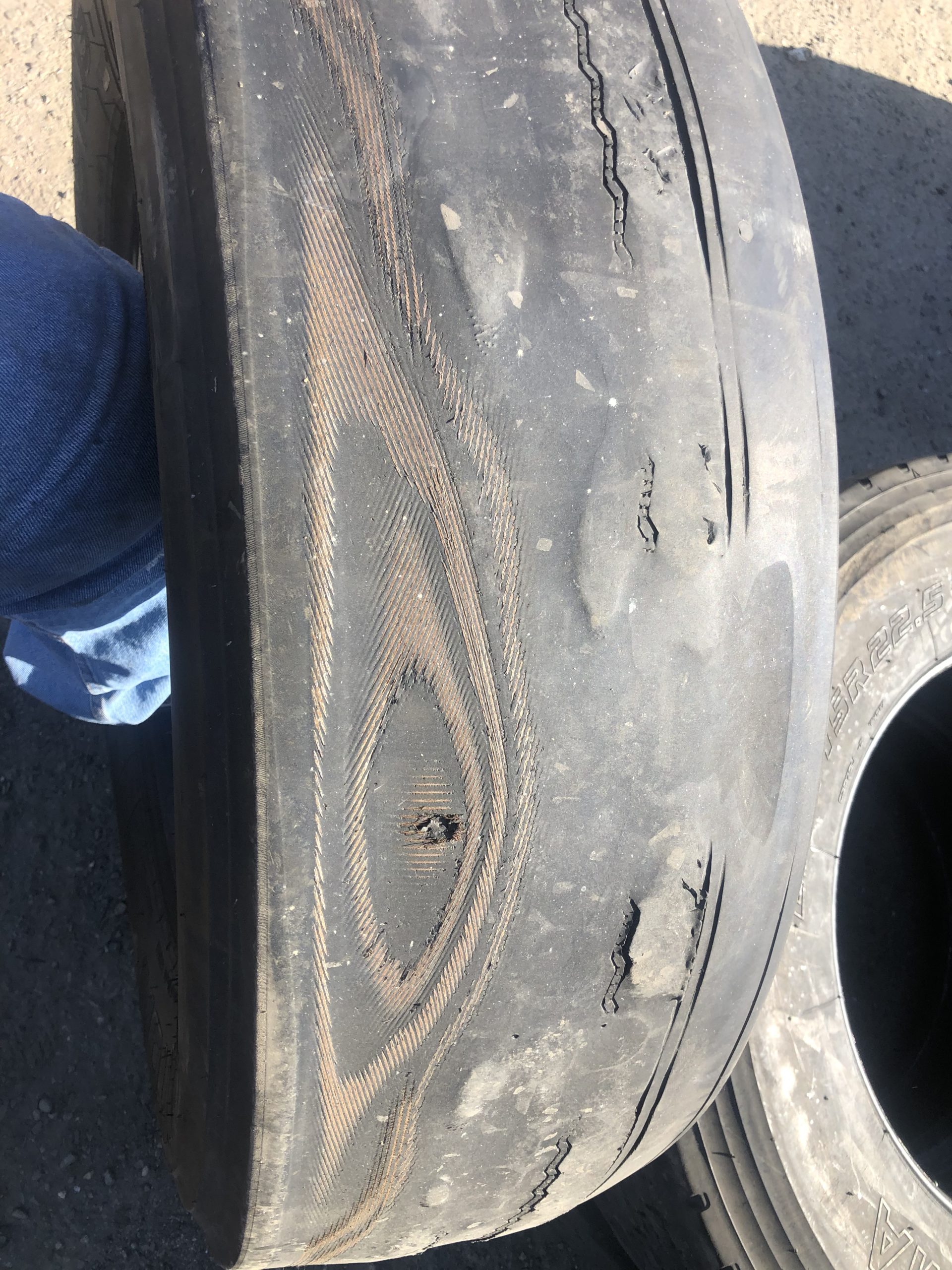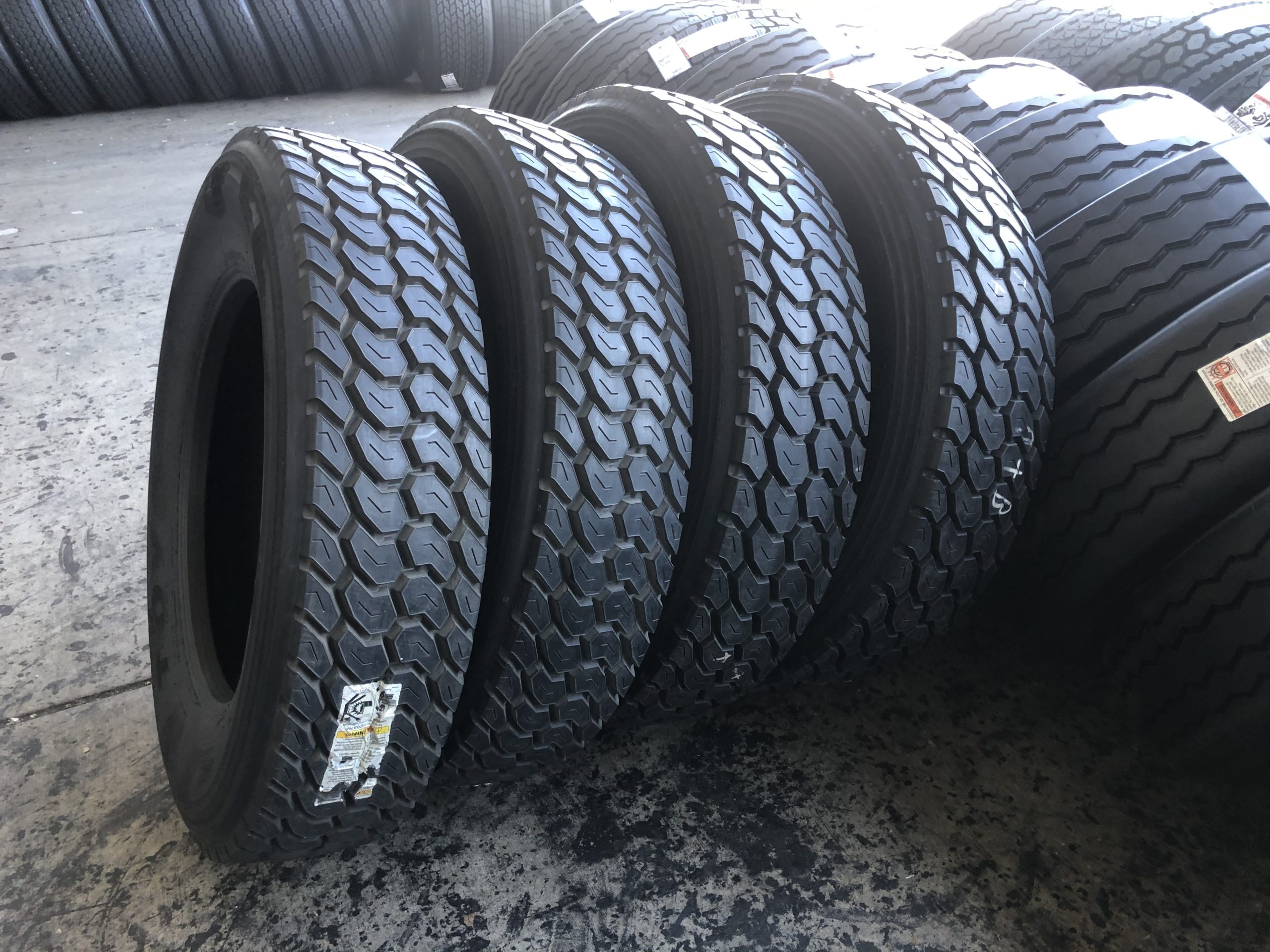Bandag BDR-HG’s big deep lug blocks feature siping and premium rubber compounding. These mold elements and state-of-the-art materials allow this open-shoulder drive to deliver the highest performance. Big truck operators use open-shoulder tread designs when they need traction on loose surfaces like dirt, mud, sand, or snow.
Most open-shoulder tread designs combine voids in the edge with voids in the center to create a subdued version of a sand paddle. As you can imagine the wear issues running sand paddles on pavement would create, open-shoulder tread designs can be plagued with heel-toe wear. In many designs of open-shoulder drive, engineers eliminate the middle void. This solid center design minimizes the scuffing of the lug corners during rotation as the tread enters and exits the contact patch.
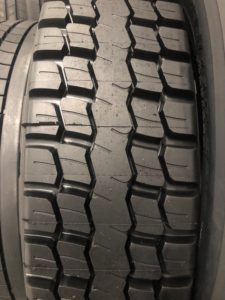
Engineering away the center voids however engineers away half of the traction ability, and inadequate start traction can cause spin chewing. Truth be told though the casing pile shows spin chewing is more of a closed than open-shoulder drive thing.
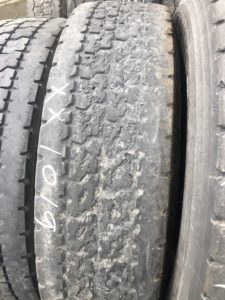
Open-shoulder tread designs that combat heel-toe with the solid-center do not come deep as offset and closed-shoulder designs. This is likely another feature of open-shoulder, solid-center designs that reduces heel-toe wear. Heel-toe wear needs to be minimized for a few different reasons. The first is that the eroded edge of the lug erodes the tire’s start traction, which, again, leads to spin chewing. The next is that just like all other forms of irregular wear, once it starts it doesn’t stop, in fact it just keeps happening faster and faster.
To illustrate, let me tell you a fiction story. A new manager at a truck stop decided to save space in the shop. He thought to himself, “I don’t know why my predecessor kept all these tires around, we must have three week’s worth of tires here. We only need 1 week’s worth. I’m going to use up and not replace 2/3rd’s of this inventory.” As the trucks came in for tire work, the technicians put the tires on trucks and trailers and the New Manager did not replace. Soon, a trailer came in that had a damaged outside tire on one of its duals. The technician told the New Manager
“Hey, this trailer’s got 295’s, and we’re out!?”
So the New Manager says,
“Look at the whole size! The takeoff is a ‘295/75r22.5’ – the ’22.5’ in ‘295/75r22.5’ is the wheel size!”
“So”
“So – ! Use this one!” the New Manager rolls a slightly taller tire with the numbers “11r22.5” molded into the sidewall at him, “It ‘ll fit, see, they’re the same wheel size!”
The technician mounted the 11r22.5 on the wheel and bolted it onto the trailer. Before he let the trailer down out of the corner of his eye he noticed that the tire he just put on was about an inch taller than the inside tire it was mated to.
10 days later the exact same trailer was back in the service bay because one of the tires was worn to the cords.
In this story, which tire do you think was worn to the cords? Was it the taller outside tire? Or the shorter inside tire? Email answers to info@mccoytrucktire.com
To be continued….




